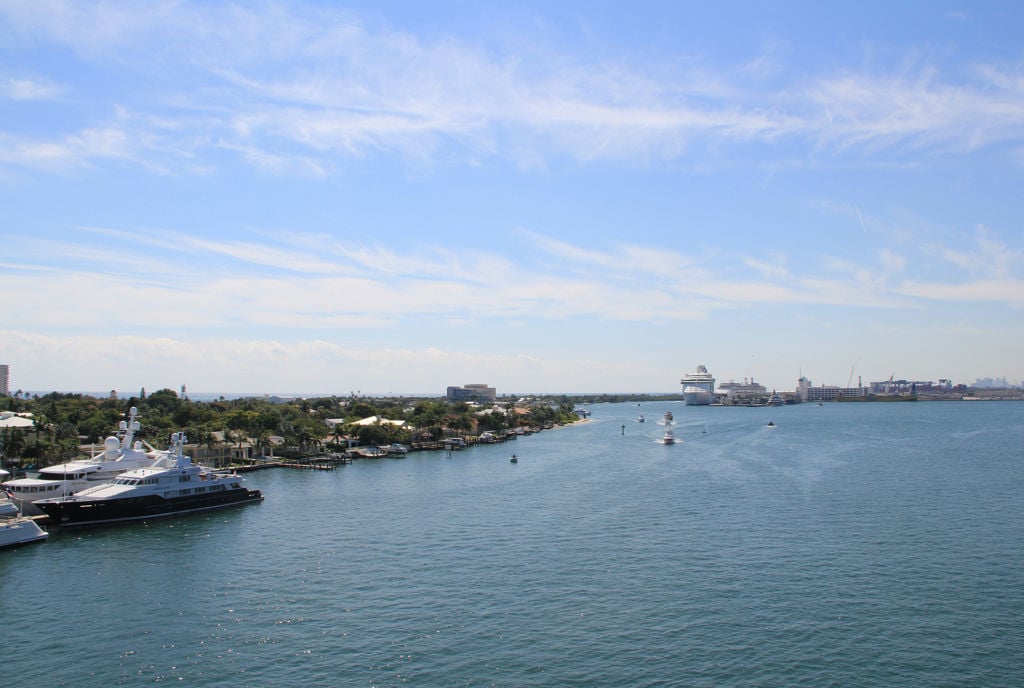Valmet tests a scrubber and wet electrostatic precipitator combination and cuts exhaust gas emissions from a marine diesel engine by up to 99%
Valmet has tested a first-of-a-kind scrubber and wet electrostatic precipitator combination and cut exhaust gas emissions in a marine diesel engine by up to 99%. The solution could allow shipping companies to lower their particle matter and black carbon emission levels, tackle global warming and comply with tightening regulation. The pilot testing and configuration project was carried out together with VTT Technical Research Centre of Finland Ltd (VTT).
Valmet has tested a first-of-a-kind scrubber and wet electrostatic precipitator combination and cut exhaust gas emissions in a marine diesel engine by up to 99%. The solution could allow shipping companies to lower their particle matter and black carbon emission levels, tackle global warming and comply with tightening regulation. The pilot testing and configuration project was carried out together with VTT Technical Research Centre of Finland Ltd (VTT).
Up to date, International Maritime Organization’s (IMO) regulations on air pollution have addressed mainly SOx and NOx emissions but the awareness of particle matter and black carbon emissions is growing due to their negative impact on global warming and human health. Whereas SOx scrubbers can reduce particulate matter and black carbon emissions with limited efficiency, a combination of a wet scrubber and a wet electrostatic precipitator could capture these emissions almost completely from a ship’s exhaust gas.
“At VTT, we had already studied the emissions of ships that have a marine scrubber installed. This way we had experience of the challenging measurement conditions related to scrubbers and also comparable data on the emission reduction potential of the new setup,” says VTT’s Senior Scientist Kati Lehtoranta.
Additionally, VTT had a medium-speed diesel engine that runs on heavy fuel oil, the equipment for demanding pilot tests, top experts and the scientific know-how to publish the test results.
“The solution we tested brings so many benefits that we believe it has great potential. Emission regulations are bound to tighten in the upcoming years. Valmet now has a solution that can be installed both on newbuilds and already operating vessels that still use conventional fuels. That enables shipping companies to significantly reduce particle emissions, while continuing their operation normally,” says Juha Jokiluoma, Product Manager at Valmet.

Valmet has piloted a first-of-a-kind combination of a scrubber and a wet electrostatic precipitator in a marine diesel engine together with VTT. By cutting particle and black carbon emissions by up to 99%, the solution would allow for a more sustainable operating environment for the shipping industry.
Technical information about Valmet Wet Electrostatic Precipitator
Valmet Wet Electrostatic Precipitator – WESP, Wet ESP – is used to control emissions, including particulate emissions, heavy metals, acid mist, oil mist and visible plume. Its operation is based on a very strong electrical field between discharge electrodes and collecting tubes created by a transformer rectifier. Valmet WESP can be integrated to Valmet DNA’s user interface or other distributed control systems as well as utilize new Valmet Industrial Internet (VII) features.
Technical information about Valmet’s marine scrubbers
Valmet offers two basic types of exhaust gas scrubbers. Its open loop scrubber uses seawater as wash water, and its closed loop scrubber circulates the wash water and uses alkaline chemicals to capture sulfur. A hybrid scrubber combines both operation modes and can easily switch between the open and closed loop operation modes. Valmet was the first company to introduce this new-generation hybrid scrubber.
The wash water from both the scrubber and the WESP systems can be efficiently treated in Valmet Water Treatment System (WTS) to fulfill the IMO regulations.
Valmet has developed scrubbers since the 1970s and delivered more than 300 scrubbers onshore and offshore.
Information about VTT Technical Research Centre of Finland Ltd
VTT Technical Research Centre of Finland Ltd is a visionary research, development and innovation partner. VTT drives sustainable growth and goes beyond the obvious to help the society and companies to grow through technological innovations. VTT is one of the leading research organisations in Europe, and has 80 years of experience in cutting-edge research and science-based results. vttresearch.com
VALMET
Corporate Communications
For further information, please contact:
Anssi Mäkelä, Senior Manager, Sales & Technology, Marine Emission Control, Pulp & Energy business line, Valmet, tel. +358 50 317 4173
Juha Jokiluoma, Product Manager, Marine Emission Control, Pulp & Energy business line, Valmet, Tel. +358 40 825 7977
Valmet is the leading global developer and supplier of process technologies, automation and services for the pulp, paper and energy industries. We aim to become the global champion in serving our customers.
Valmet's strong technology offering includes pulp mills, tissue, board and paper production lines, as well as power plants for bioenergy production. Our advanced services and automation solutions improve the reliability and performance of our customers' processes and enhance the effective utilization of raw materials and energy.
Valmet's net sales in 2021 were approximately EUR 3.9 billion. Our more than 14,000 professionals around the world work close to our customers and are committed to moving our customers' performance forward – every day. Valmet's head office is in Espoo, Finland, and its shares are listed on the Nasdaq Helsinki.